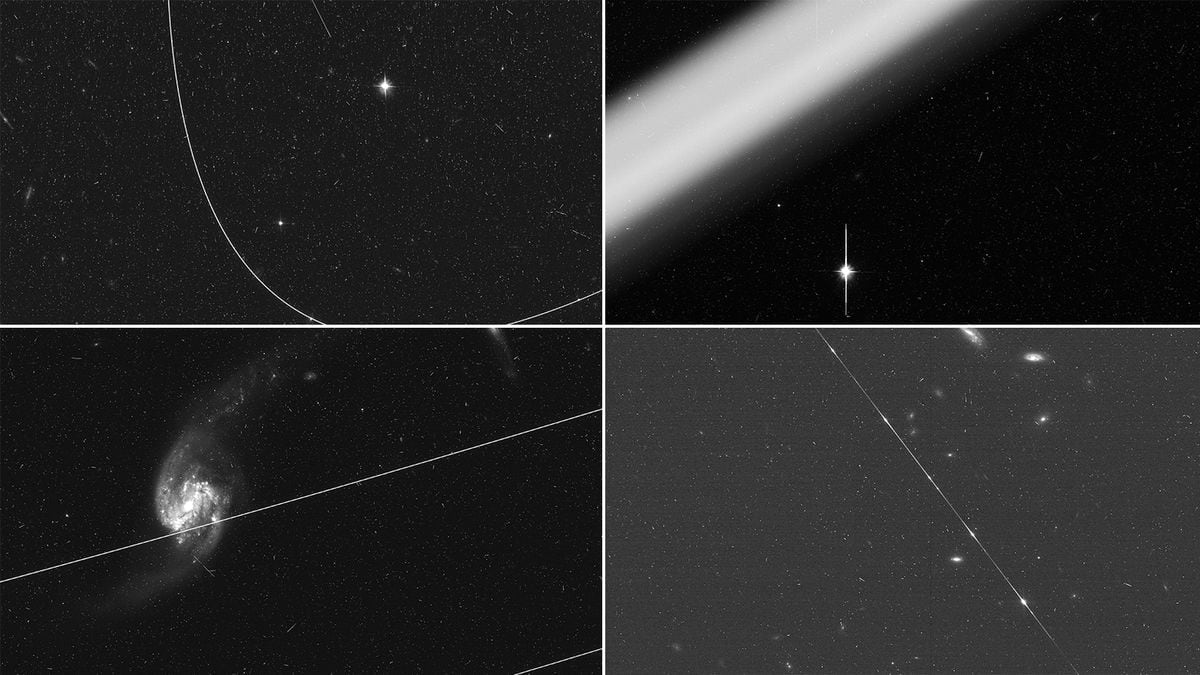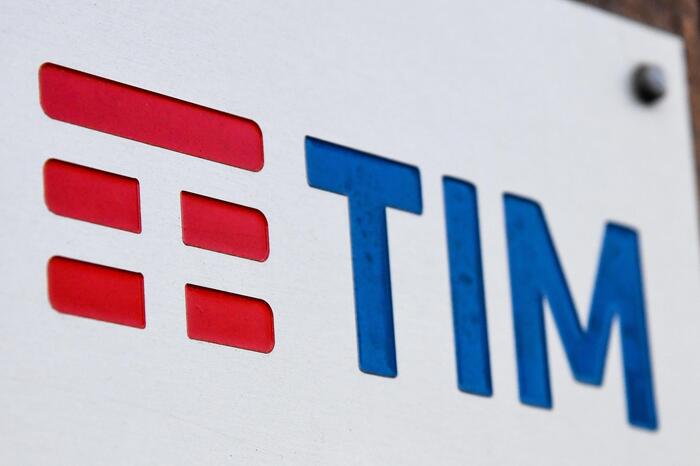They look like images spoiled by some technical glitch: distant galaxies with scratches that cut them, blank stripes that cover half a photo, lines that dirty entire constellations.
But all those astronomical observations, ruined for science, actually portray a problem: the skies are increasingly being filled with artificial satellites from internet companies, like tycoon Elon Musk's Starlink.
Swarms of devices were already a problem for ground-based observatories, but a new study puts astronomy on alert: they also ruin observations from space telescopes.
In 2021, 5.9% of the images captured by the mythical
Hubble
telescope suffered from this
photobombing
caused by the contrails of the artifacts.
That same year, that of the last measurement for the study, Starlink had deployed some 1,900 satellites.
Today there are almost 3,600 operatives and it is expected that they will multiply by 10, in the case of this company, and that they will reach 100,000 by the end of this decade, added to those of the competition.
In recent times, the observatories have raised a cry against the mega-constellations of satellites that Starlink and companies like OneWeb or Amazon are beginning to deploy in the skies.
The International Astronomical Union (IAU) has called for measures to be taken because they are going to "saturate the modern detectors of large telescopes" and the Spanish Astronomical Society considers them "a threat to astronomical observation".
So much so that they have raised the complaint to the United Nations: the commission for space affairs is studying how to put a stop to it.
The surprise, however, is that they are already damaging space telescopes such as
Hubble
, launched into Earth orbit precisely to escape interference from the atmosphere and human activities, such as communication noise and pollution. light
From up there, they have a clear celestial vault and direct vision of space... Until now.
"This is the first time that this problem has been quantified for
Hubble
," says astronomer Bruno Merín, from the European Space Agency (ESA), co-author of the study published in
Nature Astronomy
.
“Most notably, what we want to raise awareness about is that this problem also affects space telescopes,” he adds.
A growth of 50%
"We see a clear increase in the incidence, there is a 50% growth in traces observed in 2021," says Merín.
The study analyzed the images captured between 2002 and 2021 by the famous telescope, which has portrayed some of the most popular images of the cosmos.
On average, artifacts ruined 2.7% of the observations in that entire two-decade period.
But Starlink didn't start deploying its satellite convoys until 2019. "We don't know what the impact of the mega-constellations will be," laments Merín.
Actually, his study began with trying to find the asteroids that
Hubble
detected by chance, and that's when they discovered the problem with the satellites: they had twice as many contrails as space rocks (3,228 vs. 1,701).
The Neowise comet with the Starlink satellites interfering in the image.Daniel López/elcielodecanarias.com
The problems are real and are already causing major damage: in 2020 a study was published that reported one of the galaxies closest to the Big Bang.
Later everything was left in a blur, when other scientists assured that the measurements were due to the brightness of a satellite.
Be that as it may, it is a perfect example that all of the science that depends on these observations is in a mess.
We will have to go to the moon
José María Diego is one of the astronomers who, a year ago, discovered Earendel, the most distant star ever observed, thanks to observations from the
Hubble
telescope .
“It is a problem that has been going on for years and is getting worse now because the number of satellites we have flying around is multiplying,” summarizes Diego, from the Cantabria Institute of Physics.
“It is a problem that does not have an easy solution, we are going to have to live with it and it is going to get worse, it is going to get worse.
I say this half jokingly, but we are going to have to go and observe the hidden face of the Moon, ”he laments.
Although the showy thing is those photos ruined with the transfer of the satellites, the truth is that other types of telescopes are the ones that are most affected.
“People who work in radio astronomy are worse off,” Diego warns, “because satellites not only reflect light, they also emit waves that make it a continuous problem.”
These emissions also jeopardize weather forecasts, meteorologists warn.
“The images from optical telescopes are more damaged when the satellites reflect light at dawn and dusk, in the first and last light of the day,” explains Diego.
In a study conducted at a single observatory, scientists found that ruined twilight images went from less than 0.5% at the end of 2019 to 18% in August 2021, just around the time of Starlink's deployment.
Astronomers are used to automatically cleaning up these messes and often make several observations to avoid scares.
Diego recalls that there have been some changes, "reactive initiatives on the part of the scientific community", which with their protests have managed to get the satellites to be made of less reflective materials, to be painted black... "But the solar panels are still the problem, because they cannot be painted and they shine”, indicates Diego.
Faced with widespread pressure, also from US government agencies, Elon Musk has committed to trying to minimize the impact of his activities on the investigation, after years of ignoring complaints.
Artist's recreation of the Blue Walker 3 megasatellite from the AST Space Mobile company.AST
The company ensures that it will provide astronomers with orbital information so that observatories can avoid them as much as possible.
But until international standards are established, there is no guarantee that all these companies planning mega-constellations will act with restraint.
Because Starlink's satellites, deploying in swarm choreography, are not alone.
In September 2022, SpaceX launched the giant BlueWalker-3 into the skies: an 8-by-8-meter-wide satellite of the internet company AST Space Mobile, visible from the ground without difficulty: it is as bright as the brightest of the stars in the firmament.
The IAU has lobbied at the United Nations for the Committee on the Peaceful Uses of Outer Space to set up a technical group to establish international guidelines that affect all countries, given that what an American company does, for example, affects an international collaboration such as
Hubble
.
The IAU, together with delegations from Chile, Spain and South Africa (where important telescopes are located) have four months to reach a consensus proposal, according to
Science
reports .
Observing the skies is not the only thing put at risk by the space gold rush.
The US Federal Aviation Administration is going to fine Musk's rocket company, SpaceX, $175,000 (165,000 euros) for the launch of 53 Starlink satellites in August 2022, for failing to properly report the collision trajectory of the launch.
You can follow
MATERIA
on
,
and
, or sign up here to receive
our weekly newsletter
.









